How to Add or Remove the Manage Item on Context Menu?
The Manage item in the context menu of the File Explorer opens the Computer Management tool window. This shortcut is pretty useful for users to open the Computer Management without searching for it in the Windows search feature. However, some shortcuts are not useful for all standard users. An administrator or a parent can hide this item from the context menu of the File Explorer. It will also hide the Manage icon from the File Explorer menu. This will not disable the Computer Management tool and users can still access the Computer Management through other methods. In this article, we will show you methods through which you can add or remove the Manage Item from the File Explorer.

The Group Policy Editor is not available on all versions of Windows 10; therefore, we have also included a Registry method that you can use to modify the same settings. The steps in the below methods will be focusing on removing the Manage item. We have included the adding step at the end of each method.
Method 1: Using the Local Group Policy Editor
The Group Policy is a Windows feature that contains different types of advanced settings for an operating system. The setting that we will be using in this method can be found under the User Configuration category. The Group Policy Editor is much easier to use compared to the Registry Editor. The user just needs to navigate to the setting and enable it.
Users that are using the Windows 10 Home edition can skip this method and move to method 2. However, if your system is equipped with the Group Policy Editor, then follow the below steps to configure the setting:
- Hold the Windows key and press R to open a Run dialog. Type “gpedit.msc” in the box and press the Enter to open the Local Group Policy Editor.
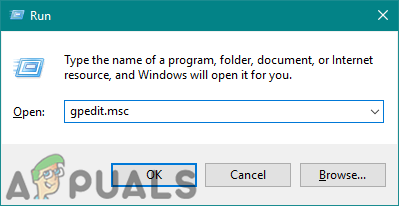
Opening the Group Policy Editor - Now navigate to the following location in the Local Group Policy Editor.
User Configuration\ Administrative Templates\ Windows Components\ File Explorer\
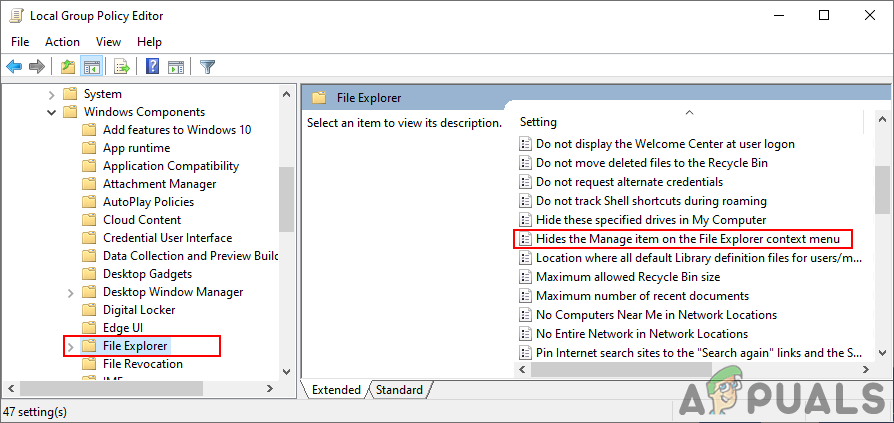
Navigating to the setting - Double-click on the setting named “Hide the Manage item on the File Explorer context menu” and that will open in another window. Now you need to change the toggle option from Not Configured to Enabled as shown in the below screenshot.
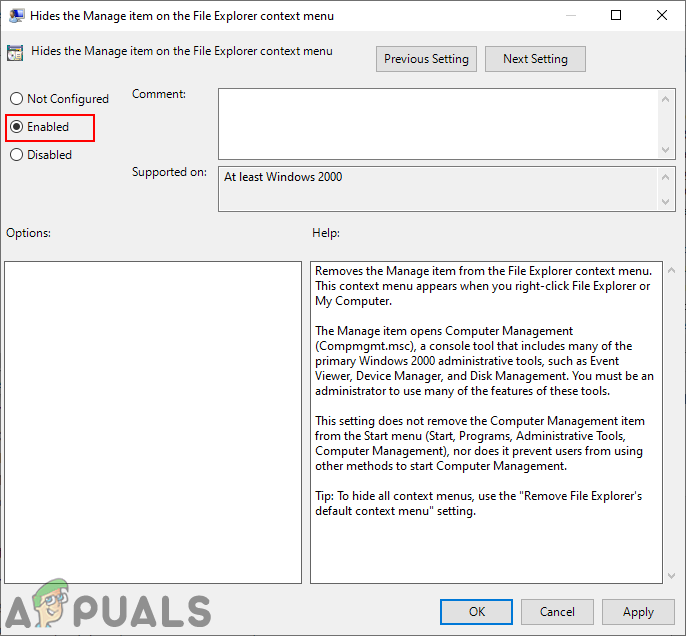
Enabling the setting - Click on the Apply and Ok buttons to save the changes. Basically, the group policy will automatically update the new configurations. You just need to close and open the File Explorer if it was already opened.
- However, if it does not update automatically, then you need to force update it. Search for Command Prompt in the Windows search feature and run it as an administrator.
- Type the following command in Command Prompt (Admin) window and press Enter.
gpupdate /force
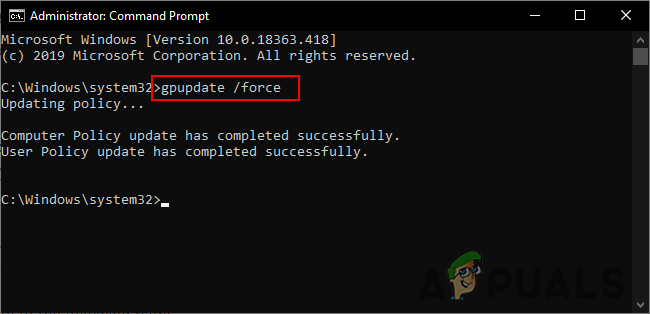
Force updating the Group Policy - You can always add the Manage Item again by changing the toggle option to Not Configured or Disabled in step 3.
Method 2: Using the Registry Editor
The Windows Registry is another tool that can help in hiding the Manage Item on the File Explorer. If you have already used the Group Policy Editor method, then it will automatically update the key and value for the specific setting. However, if you are using this method directly, then you need to manually configure the key and value in Registry Editor. This setting can be configured in the Current User hive. The Windows Home users can also try this method since they don’t have Group Policy Editor on their operating system.
Note: We have also included a step for creating a Registry backup before making any new changes. You can skip that step if you don’t want to create any backup.
- Press the Windows + R key together to open a Run dialog box. Now type “regedit” and press the Enter key to open the Registry Editor. If prompted by the UAC (User Account Control) dialog, then click on the Yes button.
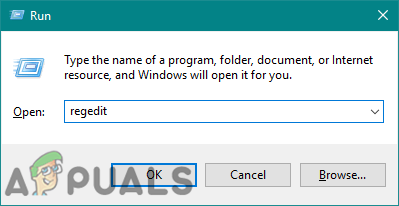
Opening the Registry Editor - You can also create a Registry backup before making any new changes. Click on the File menu in the menu bar and choose the Export option in the context menu. Now choose the name and path for the file. Click on the Save button to save it.

Creating the Registry Backup Note: To restore a Registry backup, you can click on the File menu and then choose the Import option in the list. Then you can select the file that you previously created.
- You need to navigate to the following path in the Registry Editor window:
HKEY_CURRENT_USER\Software\Microsoft\Windows\CurrentVersion\Policies\Explorer
Note: If some keys are missing, you can create them by right-clicking on the existing key and choosing the New > Key option.
- Right-click on the right pane of the Explorer key and then choose the New > DWORD (32-bit) Value option. Now name the key as “NoManageMyComputerVerb“.
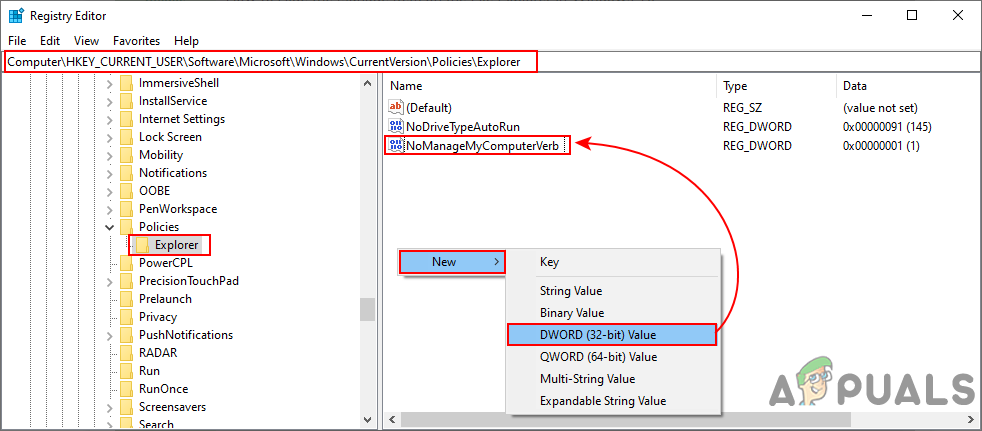
Creating a new value in Registry - Double-click on the NoManageMyComputerVerb value to open it. Now change the value data to 1.
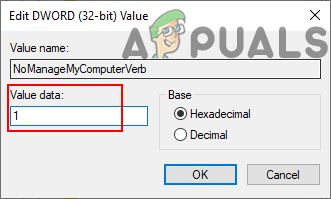
Changing the value data - Finally, after making all the changes, make sure you restart your system to apply these changes.
- You can always add the Manage Item by changing the value data to 0. You can also simply remove the NoManageMyComputerVerb value from the Registry Editor to add it back.





